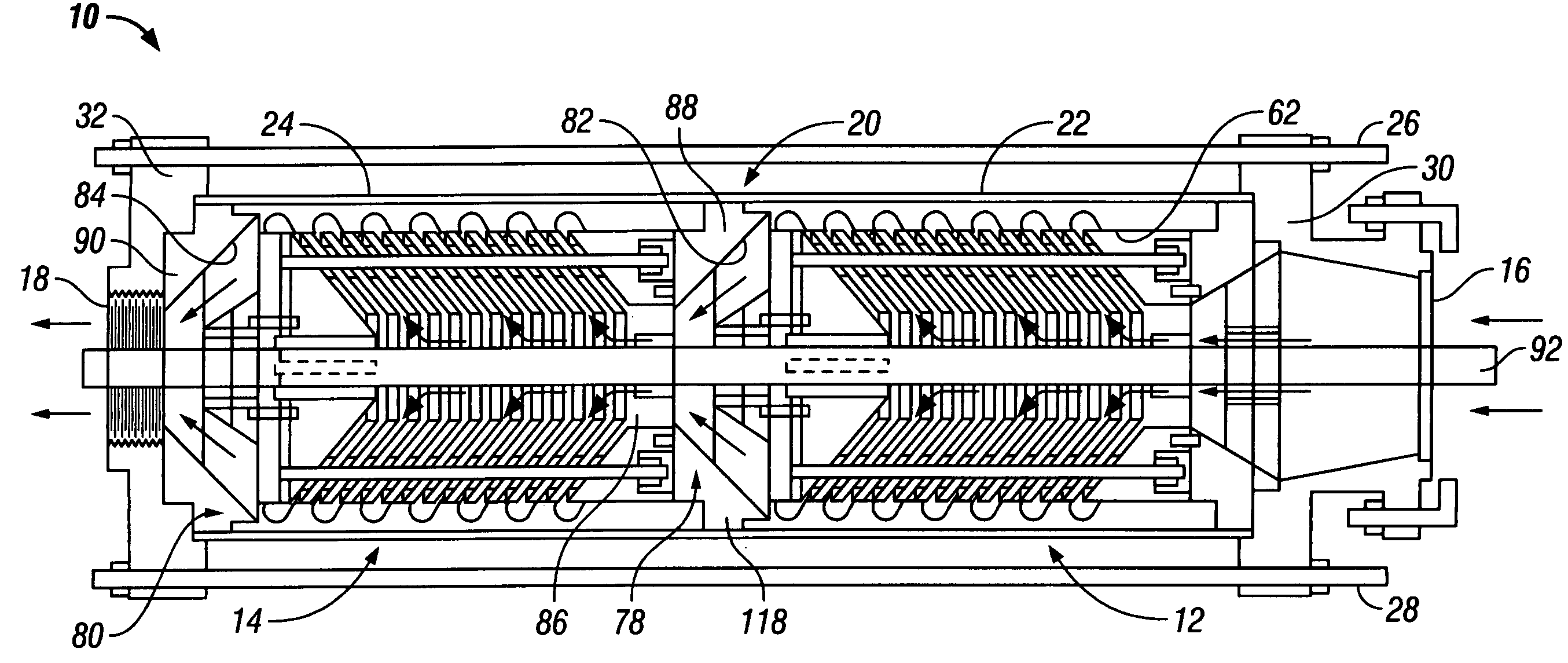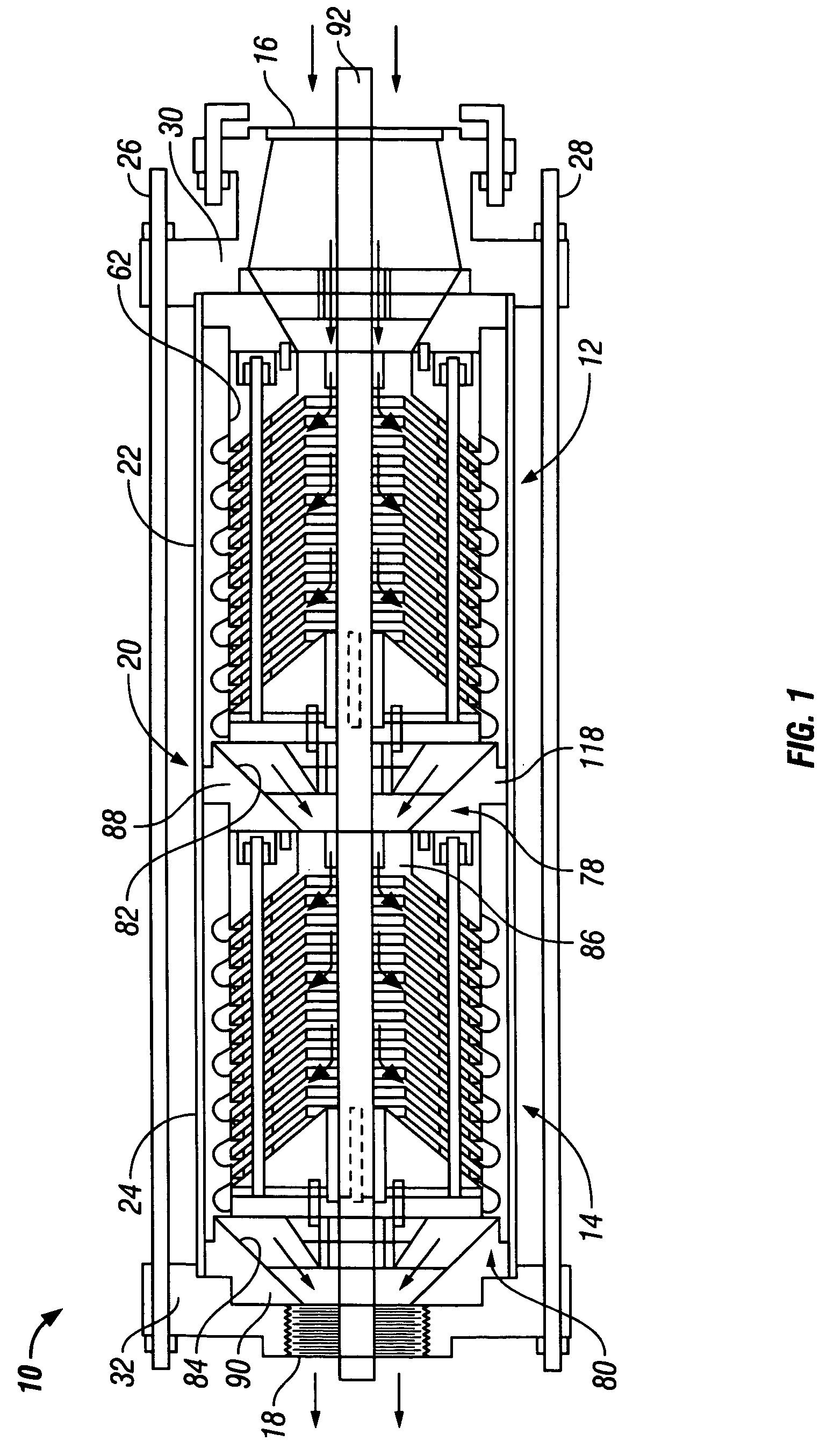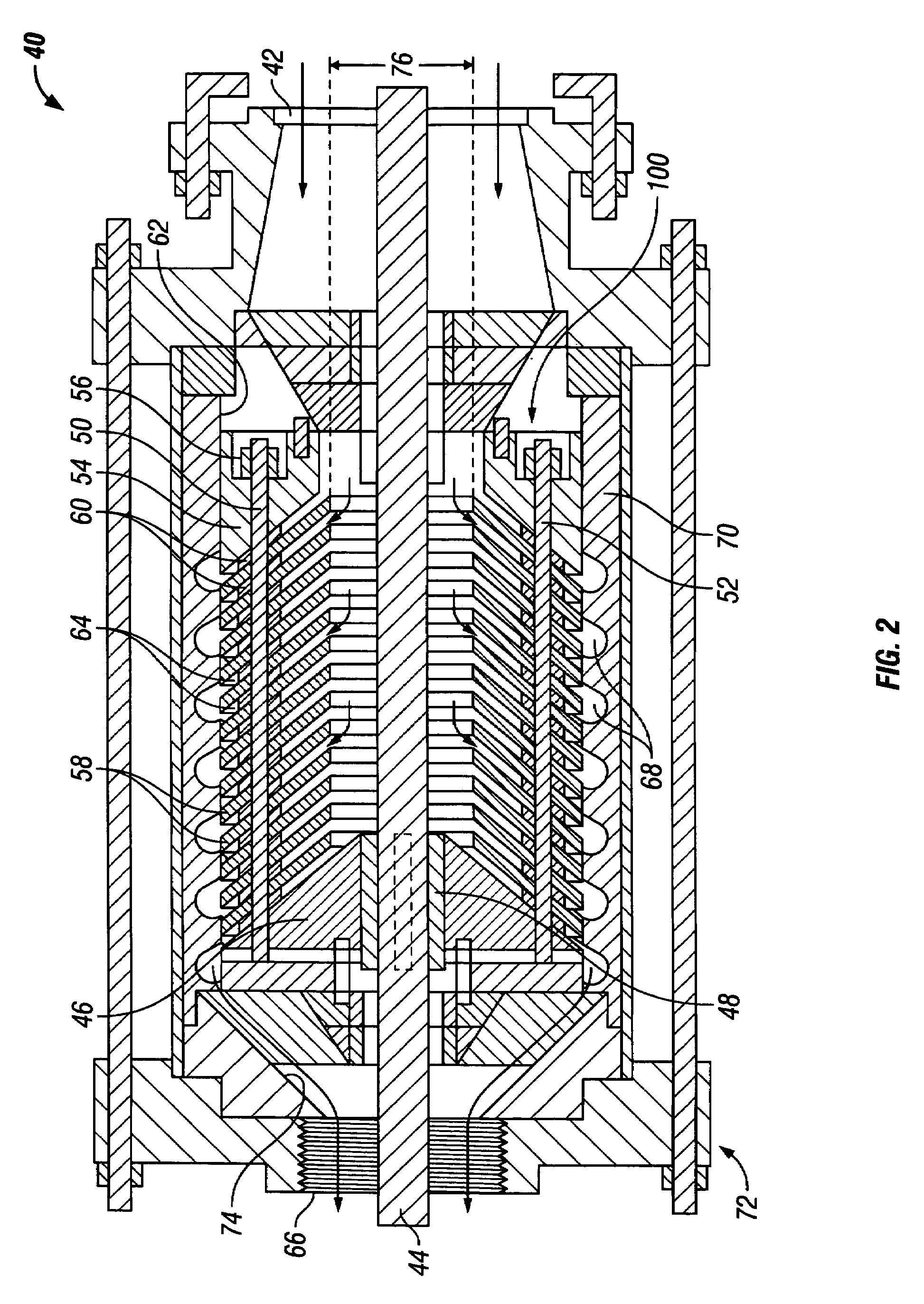Bladeless conical radial turbine and method
a conical radial turbine and bladeless technology, applied in the field of bladeless or boundary layer turbines, can solve the problems of slipping in capacity, affecting the efficiency of traditional pumps, and affecting the efficiency of traditional design pumps, so as to achieve smooth direct and guide fluid.
- Summary
- Abstract
- Description
- Claims
- Application Information
AI Technical Summary
Benefits of technology
Problems solved by technology
Method used
Image
Examples
Embodiment Construction
[0100]Referring now to the figures, and more particularly to FIG. 1, there is shown an embodiment of multistage boundary layer pump 10 in accord with the present invention. Pump 10 as shown comprises first boundary layer pump stage 12 and second boundary layer pump stage 14 axially interconnected together. The details and operation of multistage boundary layer pump 10 which permit the unique end-to- end interconnection of multiple boundary layer pump stages is discussed hereinafter. While only two boundary layer pump stages are shown in FIG. 1, it will be understood that many more boundary layer pump stages may be interconnected end-to-end in a similar manner as that shown in FIG. 1. Moreover, each subsequently connected boundary layer pump stage may be identical or substantially identical to the second boundary layer pump stage 14, if desired. First boundary layer pump stage 12 may utilize a different inlet 16 to mate with surrounding equipment as desired. Accordingly, for use in s...
PUM
 Login to View More
Login to View More Abstract
Description
Claims
Application Information
 Login to View More
Login to View More - R&D
- Intellectual Property
- Life Sciences
- Materials
- Tech Scout
- Unparalleled Data Quality
- Higher Quality Content
- 60% Fewer Hallucinations
Browse by: Latest US Patents, China's latest patents, Technical Efficacy Thesaurus, Application Domain, Technology Topic, Popular Technical Reports.
© 2025 PatSnap. All rights reserved.Legal|Privacy policy|Modern Slavery Act Transparency Statement|Sitemap|About US| Contact US: help@patsnap.com



